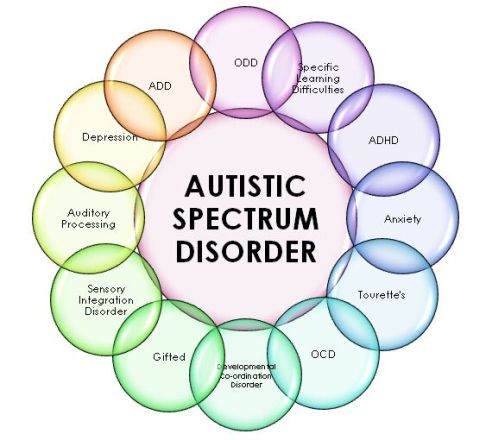Boys are four times as likely to receive early diagnosis and intervention for ASD (Autism Spectrum Disorder) than girls. There was a time when it was believed that ASD was prevalent only in boys. Girls are always taught to blend in and not stand out. While boys and men with Autism also use camouflage, researchers point out that the pressure is socially more on women, points out Payal, in the weekly column, exclusively for Different Truths.
This month we highlight Autism and do our best to create an awareness about Autism. And as with everything else related to women, we discover the blind spot: boys are four times as likely to receive early diagnosis and intervention for ASD (Autism Spectrum Disorder) than girls.
There was a time when it was believed that ASD was prevalent only in boys. All early tests and diagnosis have, in fact, been based on criteria developed among males. It is only now that we are waking up to the fact that ASD presents very differently in girls as compared to boys, and whether this is due to socialisation or genetics or a mix of both is as yet unclear.
In a new study Dr. Lipkin, director of the Interactive Autism Network at the Kennedy Krieger Institute in Baltimore is looking at gender differences in ASD. “There are clearly major gender differences in the prevalence of Autism, with more than four boys being diagnosed for every girl. However, we have little understanding of the roots of these differences,” says study author Dr. Paul Lipkin, “Are they biological, social, diagnostic, or tied to other factors, such as screening systems?”
Girls tended to have more issues with the ability to read social cues, and boys had more mannerism-related issues like repetitive behaviours including hand flapping.
It was found that in general, girls were diagnosed with ASD later than boys. For girls, the diagnosis of pervasive developmental disorder (impacting basic skill development) was made on an average at age four, whereas boys were diagnosed with the same disorder at about 3.8 years. Girls were diagnosed with Asperger’s syndrome around age 7.6 years, while boys were diagnosed around 7.1 years. Symptoms also seemed to differ, depending on gender. Girls tended to have more issues with the ability to read social cues, and boys had more mannerism-related issues like repetitive behaviours including hand flapping. When boys were older, around age 10-15, they had more social issues like trouble communicating in social settings than girls did.
“This and other studies suggest that girls with ASD, as well as perhaps older women with this disorder, differ from males on key symptoms and behaviours, particularly around social interactions. We must determine if the less recognisable symptoms in girls are leading not only to delayed diagnosis but also under-identification of the condition in women.”
These findings suggest that boys’ behaviour are more apparent than the girls, with the potential for girls being more difficult to recognize,” says Lipkin. “Since the problems experienced by girls are in social cognition and require social opportunities, they are much more likely to be unnoticed until the elementary school years.”
It is an established fact that the socialisation of girls is vastly different from boys. Girls with ADHD/ADD present very differently from boys and for the same reason go undiagnosed. For example, I learned that hyperactivity is socially ‘controlled’ and manifests itself as constantly playing with hair, or nail biting or tapping of toes. In the same way, social conditioning affects the symptomatic manifestation of ASD in females, because social behaviour for girls and women is controlled to a far greater degree than for boys.
Francine Russo, recently wrote about a 45-year-old lady, asking for her name to be withheld and identifying herself only as ‘Jennifer’, who talked to her about ‘Camouflage’ and how she evaded the diagnosis of Autism for all these years.
What is Camouflaging? Camouflaging is the difference between how people seem in social contexts and what’s happening to them on the inside. If, for example, someone has intense Autism traits but tends not to show it in her behaviour, the disparity means she is camouflaging, says Meng-Chuan Lai, Assistant professor of Psychiatry at the University of Toronto in Canada, who worked on the study. The definition is necessarily broad, allowing for any effort to mask an Autism feature, from suppressing repetitive behaviours (known as stimming) or talk about obsessive interests to pretending to follow a conversation or imitating neurotypical behaviour.
Jennifer was not diagnosed with Autism until she was 45 — and then only because she wanted confirmation of what she had figured out for herself over the previous decade. Most of her life, she says, she evaded a diagnosis by forcing herself to stop doing things her parents and others found strange or unacceptable. Some of the tricks she used to mask her Autism — for example, staring at the spot between someone’s eyes instead of into their eyes, which made her uncomfortable.
To compensate, Jennifer said she practices how to act. Before attending a birthday party with her son, for example, she prepares herself to be “on,” correcting her posture and habitual fidgeting. She demonstrates for Francine how she sits up straight and becomes still. Her face takes on a pleasant and engaged expression, one she might adopt during a conversation with another parent. To keep a dialogue going, she drops in a few well-rehearsed catchphrases, such as “good grief” or “go big or go home.” “I feel if I do the nods, they won’t feel I’m uninterested,” she says.
Girls are always taught to blend in and not.
Girls are always taught to blend in and not stand out. While boys and men with Autism also use camouflage, researchers point out that the pressure is socially more on women. It is not surprising that the effort of maintaining this camouflage is physically and emotionally and mentally exhausting and causing anxiety and depression.
The adults in the survey described an imaginative store of tools they call upon in different situations to avoid pain and gain acceptance. If, for example, someone has trouble starting a conversation, she might practice smiling first, Lai says, or prepare jokes as an ice-breaker. Many women develop a repertoire of personas for different audiences. Jennifer says she studies other people’s behaviour and learns gestures or phrases that, to her, seem to project confidence; she often practices in front of a mirror.
Researchers discovered that girls with Autism try and stick with other girls in a group weaving in and out of their activities. By contrast, boys with Autism tend to play by themselves, off to the side. Since social isolation is an important criterion to spot children on the spectrum, many girls with Autism can be missed out on this basis.
The girls with Autism were rejected repeatedly from the groups, but would persist or try to join another one.
Last year, a team of researchers in the United States extended visited several schoolyards during recess and observed interactions among 48 boys and 48 girls, aged 7 or 8 on average, half of each group diagnosed with Autism. The typical girls in the study would flit from group to group, says Connie Kasari who was part of the Study team. The girls with Autism appeared to be doing the same thing, but what was actually happening, the investigators learned was different: The girls with Autism were rejected repeatedly from the groups, but would persist or try to join another one. The scientists say these girls may be more motivated to fit in than the boys are, so they work harder at it.
Delaine Swearman, 38, says she wanted badly to fit in when she was about 10 or 11 but felt she was too different from the other girls in her school. She studied the girls she liked and concluded, “If I pretended to like everything they liked and to go along with everything, that maybe they would accept me,” she says.
“I actually got told by a couple of my teachers that I needed to have ‘quiet hands,’” says Katherine Lawrence, a 33-year-old woman with Autism in the U.K. “So I had to resort to hiding my hands under the table and ensuring my foot-tapping and leg-jiggling remained out of sight as much as possible.” Lawrence, who was not diagnosed with Autism until age 28, says she knew that otherwise, her classmates would think she was strange and her teachers would punish her for distracting others.
Which brings us back to socialisation and why, in the first place, does it have to be different for girls and boys? Our social expectations are still askew, allowing boys and men to ‘get away’ with so much, and still holding women responsible and answerable to the intense pressure of expectations. Once again, I say this, as we move to a more evolved society, and a more equitable one, we need to rework socialisation of girls and boys. Morality should not be based on gender – if something is wrong it’s wrong for both girls and boys and if something is right it is right for both girls and boys. Social behaviour is not gendered. Neither is etiquette. Nor is kindness, compassion, bravery, integrity or any quality I know of.
Photos from the Internet
#Autism #AutismAndGirls #EarlyDetection #BoysAndGirlsWithAutism #DiagnosisOfAutism #SocialObligation #FeministAtFifty #DifferentTruths









 By
By

 By
By
 By
By